The size and age of our Universe is not only a critically important issue in cosmology, but is also among the most controversial and delicate of the cosmological questions. Infrared observations made using NASA's Spitzer Space Telescope have now given us the most precise estimate yet of the rate at which our Universe is expanding. The key was not the discovery of a new method for measuring distance. Rather, astronomers discovered how to measure brightness more accurately. The new value for the Hubble constant, good to within three percent, is 74.3 kilometers per second per megaparsec (km/s/Mpc).
The redshift of galaxies was discovered by Vesto Slipher of the Lowell Observatory (Flagstaff, Arizona, USA) in 1912. He first measured the spectrum of M31 (the Andromeda galaxy), discovering that it was approaching our galaxy. However, his later spectral measurements of roughly 15 galaxies established that most galaxies were receding, and some at considerable velocity.

About 15 years later at the Mount Wilson observatory in California, Edwin Hubble had invented a number of ways to determine distance to nearby galaxies, and thought to correlate these distances with galactic redshifts measured by Slipher and others. He was amazed to discover that, no matter what direction you looked, redshift and distance appeared to be proportional – a linear relationship known as Hubble's law. Hubble's law is the most general cosmological measuring tool we have for objects and events with distances ranging from about 20 Mpc (65 million light years (Mly)) to the earliest visible events.
The main observational issues in establishing Hubble's law are to refine our knowledge of the shape and size of the relationship between redshift and cosmological distance. The relationship is only linear at distances up to about 500 Mpc (1.63 gigalight-years (Gly)). The manner in which it thereafter diverges from linear depends on the parameters of the lambda-CDM model (the standard cosmological model) which best fit the observational data.
The size of the redshift-distance relationship is an expansion rate known as the Hubble parameter. (Once called the Hubble constant, we now know it changes with time.) The size of the Hubble parameter has been remarkably difficult to pin down, to the extent that as recently as 1996 a formal debate was carried out in the astronomical community over observational estimates ranging from 50 to 100 km/s/Mpc.
The new value (74.3 km/s/Mpc) for the Hubble parameter is the result of a number of Hubble space telescope measurements, now refined using the Spitzer infrared observations, and confirmed by an independent approach using the Wilkinson Microwave Anisotropy Probe (WMAP), a satellite that measures tiny anisotropies in the 3K cosmic microwave background radiation. The expansion rate is presently only 2.41 parts in a billion billion per second. This seems a tiny effect, but the Universe is a big place.

The Universe did not come equipped with giant yardsticks – how do astronomers determine cosmological distances accurately enough even to notice Hubble's law? A particular challenge has been to make an accurate and precise determination of the Hubble parameter. It has been a long process whose success depends on the fortunate accident that certain kinds of celestial objects have characteristic properties that allow their use as distance standards.
- "But I am constant as the northern star, Of whose true-fixed and resting quality There is no fellow in the firmament." Julius Caesar – Act III, Scene 1.
This familiar Shakespearean line, sadly, is in error. Polaris, the northern star, is the closest member of the class of Cepheid variable stars, on whose special properties depends the second step on the cosmic distance ladder. Cepheids were discovered by Henrietta Leavitt in 1908 during a study of variable stars in the Large Magellanic Cloud, and established as measuring tools for the nearer regions of deep space by Edwin Hubble and others.What makes Cepheids so valuable for determining distances is their predictable properties. They are very bright variable stars that have a strong linear relationship between their luminosity (meaning their total light output) and their pulsation period. If you know the period-luminosity relationship and the apparent brightness of the Cepheid, you can easily calculate its distance.
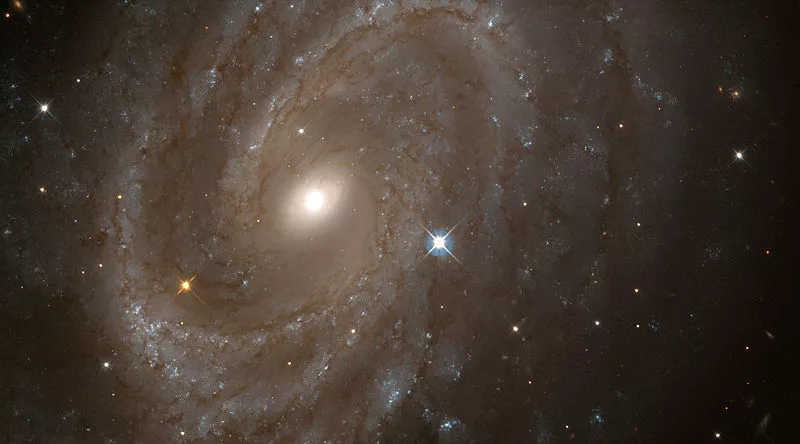
Indeed, the redshift and distance to NGC 4603, a spiral galaxy some 33 Mpc (108 Mly) distant in the constellation Centaurus, was recently carried out by Hubble observation of Cepheids in that galaxy. But how were the distances measured sufficiently accurately to establish and calibrate the period-luminosity relationship? There are a number of methods to independently determine the distance to Cepheids for calibrating the Cepheid period-luminosity relation. In many ways, however, the most general and useful is to measure the parallax of a nearby Cepheid.
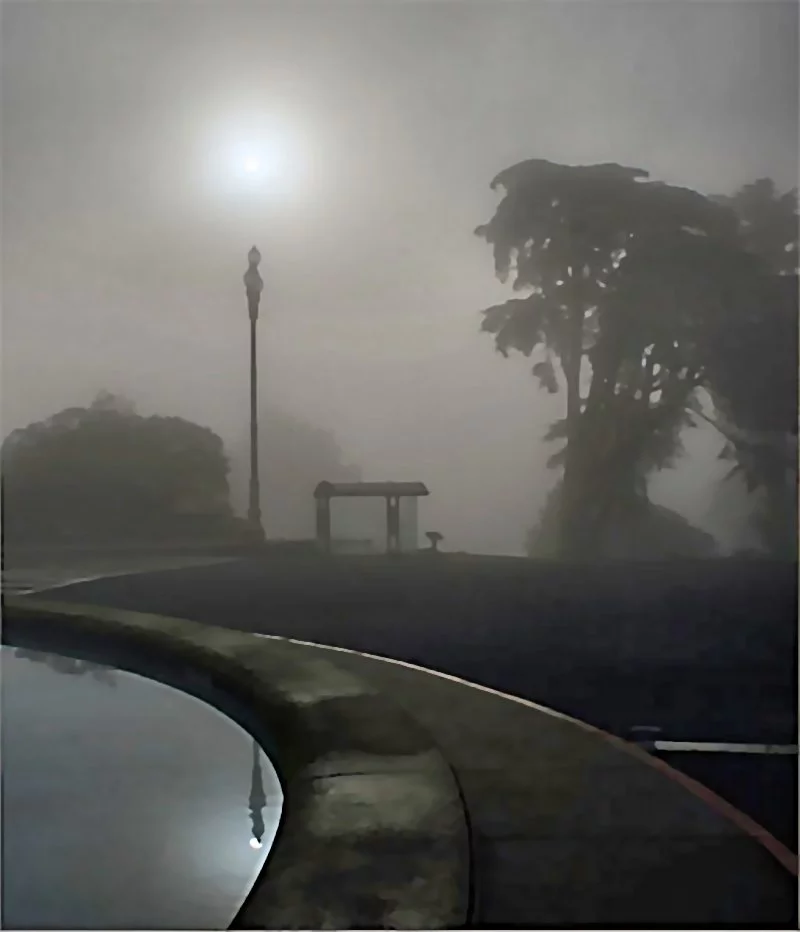
The first step on the cosmic distance ladder, parallax is a direct measurement of the distance to nearby stars. The distance of nearby stars can be measured with reasonable accuracy using measurements of their annual parallax, or the change in their apparent position in the skies as the Earth moves in its orbit around the Sun. If the apparent position of an object changes by one second of arc (1/3600 of a degree) during a year's observations, the object is at a distance of about 3.26 light years, a distance called a parsec (pc).
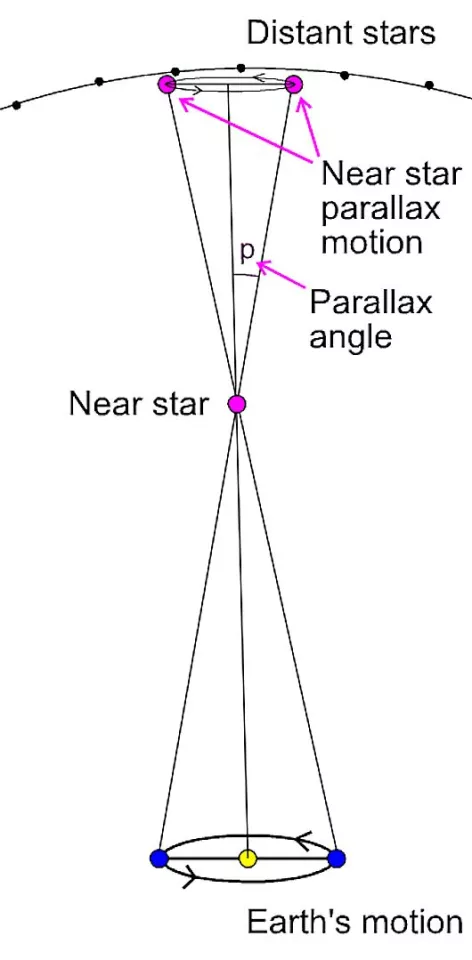
The ESA's Hipparccos satellite has measured the distance of over 100,000 stars to a distance of about a thousand parsecs, in the process measuring the distance to 273 Cepheids. The upcoming ESA Gaia mission will be able to measure distance by parallax to stars as distant as 100 Kpc (kiloparsecs).
Special approaches to establishing distance of Cepheid variables include measuring the distance to a star cluster in which the Cepheid resides – it is easier to determine the distance of a large group of stars than to one alone. This is why the distance to Delta Cephei is known more precisely than that of any other Cepheid. An extension of this approach is to examine Cepheid variables in nearby galaxies whose distance has been established by other means.
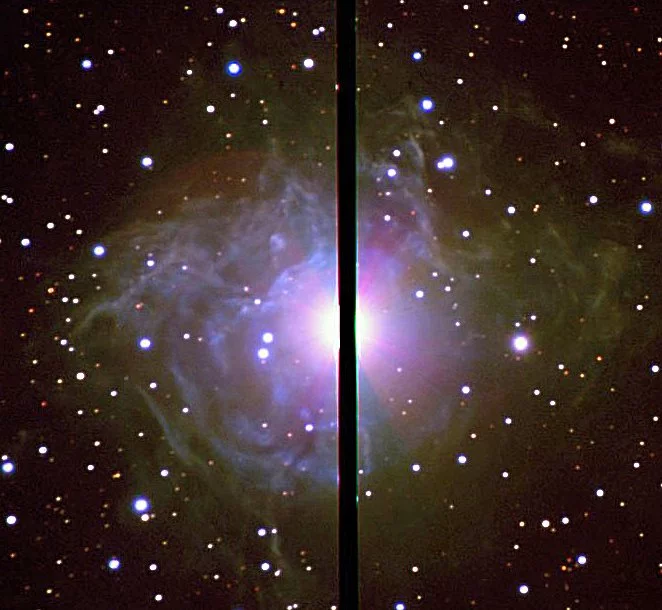
Another technique establishes distance to Cepheids surrounded by dust by measuring the rate at which the brightness pulses move outward through the dust. This occurs at the speed of light, so the angular rate of expansion can easily be converted into the distance to the star. This method has only been used once so far, to establish the distance to RS Puppis as 6,500 light years. However, evidence is building to suggest that many (perhaps most) Cepheids are surrounded by a cloud of gas and dust escaping from the star during the pulsations, which should allow this direct measurement method to be used more widely.
The third step on the cosmic distance ladder involves observation of Type-Ia supernovae. The maximum luminosity of these supernovae is constant to about 3 percent, so they can be used to measure distances over which they can be seen – in principle, from nearly any unobscured location in the Universe. Their characteristic luminosity has been established through comparison with the Cepheid distance scale. The distance of a Type-Ia supernova closer than about 35 Mpc (115 Mly) can be established by measuring the period (and hence the luminosity) of Cepheids in the galaxy where the supernova was observed.
Finally, the relation between redshift and distance is established using redshift measurements of galaxies in which a Type-Ia supernova has been observed. The apparent brightness of the supernova depends on the distance to the galaxy. The supernova distance scale is considered sufficiently precise that cosmologists were able to detect the acceleration of the expansion of the Universe through such studies.
However, each step on the cosmic distance ladder inherits the uncertainties and errors of the earlier steps as well as its own characteristic errors. The issue of propagating errors in the cosmic distance scale is of increasing importance as more subtle cosmological properties are discovered.
For example, it is becoming clear that the Cepheid period-luminosity relationship has a partially systematic error related to obscuration by clouds of dust and gas around most Cepheids. There is new evidence suggesting that most Cepheids experience an ongoing loss of stellar mass in the form of greatly enhanced stellar wind, which can be a million times greater than that of our Sun.
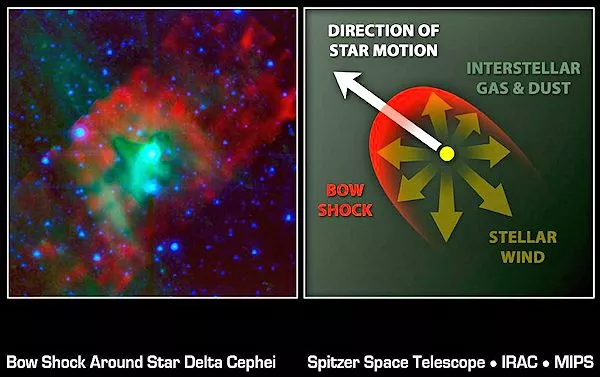
In the figure above Delta Cephei shows strong interactions with the surrounding interstellar gas and dust, as well as dynamic effects associated with the enormous stellar wind. These phenomena lead to the apparent magnitude of Cepheids being smaller than expected, as the dust and gas partially absorbs the light from the Cepheid. The absorption differs between Cepheids, so the distance scale has both systemic and nonsystemic errors associated with this surrounding gas and dust.
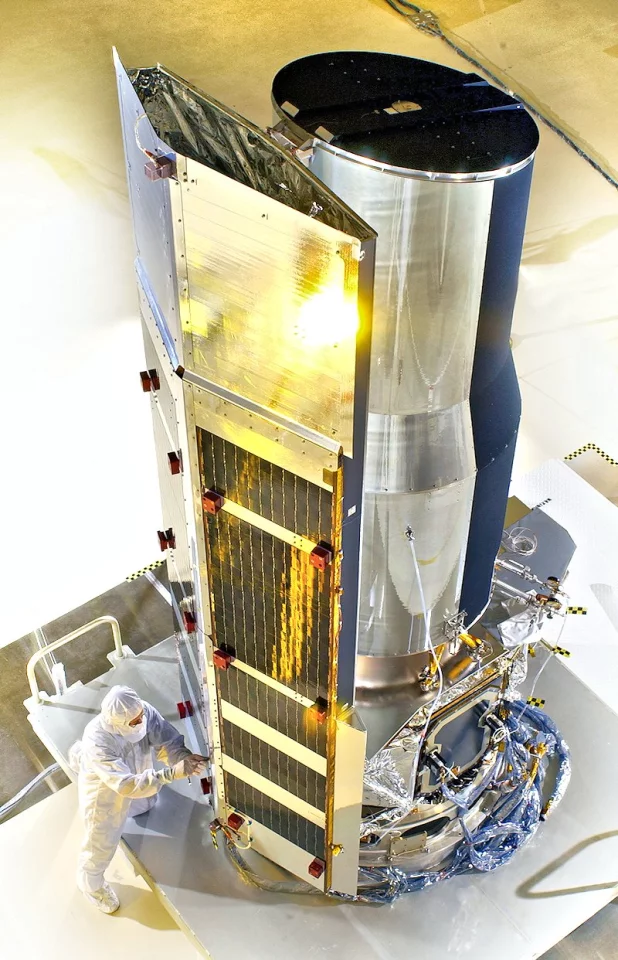
The recent observations by the Spitzer space telescope have considerably improved our knowledge of distances based on the Cepheid period-luminosity relation. This is because its mid-infrared vision sees through dust and gas to provide more accurate measurements of the period-luminosity relation, which can affect Cepheids partially obscured by dust.
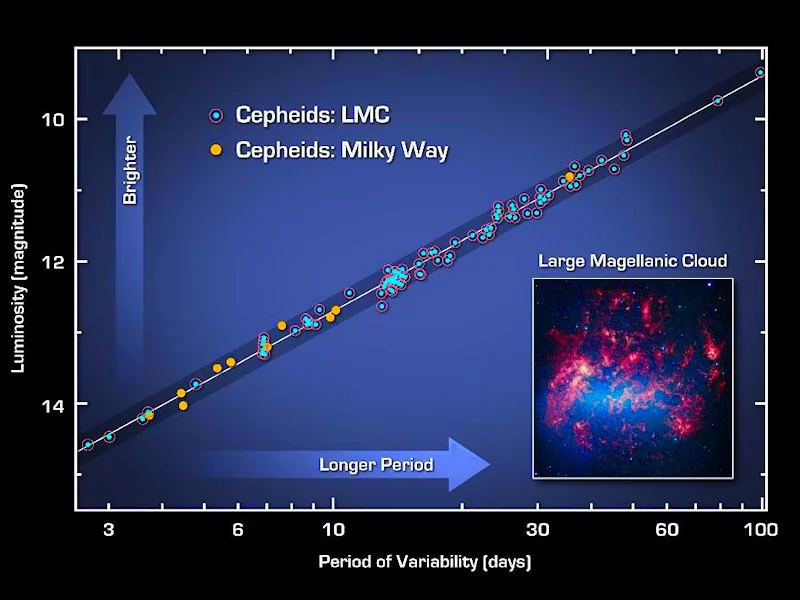
Spitzer observed 10 Cepheids in our own Milky Way galaxy and 80 in a nearby neighboring galaxy called the Large Magellanic Cloud. Without cosmic dust and gas blocking their view, more precise measurements of the Cepheids' apparent brightness were obtained. These observations have enabled researchers to obtain a new and improved estimate of the Hubble parameter, thereby altering the calibration of the entire cosmic distance ladder, and opening a path to a new and improved estimate of our Universe's expansion rate.
The lead author of the new study, Wendy Freedman of the Observatories of the Carnegie Institution for Science in Pasadena, said "It's exciting that we were able to use Spitzer to tackle fundamental problems in cosmology: the precise rate at which the Universe is expanding at the current time, as well as measuring the amount of dark energy in the Universe from another angle." Freedman led the groundbreaking Hubble Space Telescope study that had in 2001 measured the Hubble constant.
"Just over a decade ago, using the words 'precision' and 'cosmology' in the same sentence was not possible, and the size and age of the Universe was not known to better than a factor of two," said Dr. Freedman. "Now we are talking about accuracies of a few percent. It is quite extraordinary." It is indeed.
Source: NASA












